Wall Panels for OVO
year: 2019
Designers: Mike Kozlovsky & Klaudia Żmuda
Collection of wall panels for the OVO brand – a Polish manufacturer of innovative, modular wall panels. They are the answer to the growing need to surround oneself with unconventional objects, designed in every detail with the high-quality materials. This collections are assemblage of extraordinary compositions – thanks to this, every buyer can feel unique. They can be used as an art piece, however by selecting larger sets the customer is able to multiply the number of panels. They are a perfect solution to decor wall not only in a private apartment but also in hotel or office.
The each collections consists of six different panels, measuring 50 x 50 cm. The project allows you to create any configuration, as well as choose any number of panels in the composition. It is possible to combine panels after rotating every 90 degrees.
BLINK
Simplified, oblique solids with a smooth, rust-covered reflecting surface are embedded in the moss. The colors are inspired by the forest landscape. The intention was to get closer to nature, hence the limited use of artificial materials. This is an offer for those who value Scandinavian design, but want to diversify.


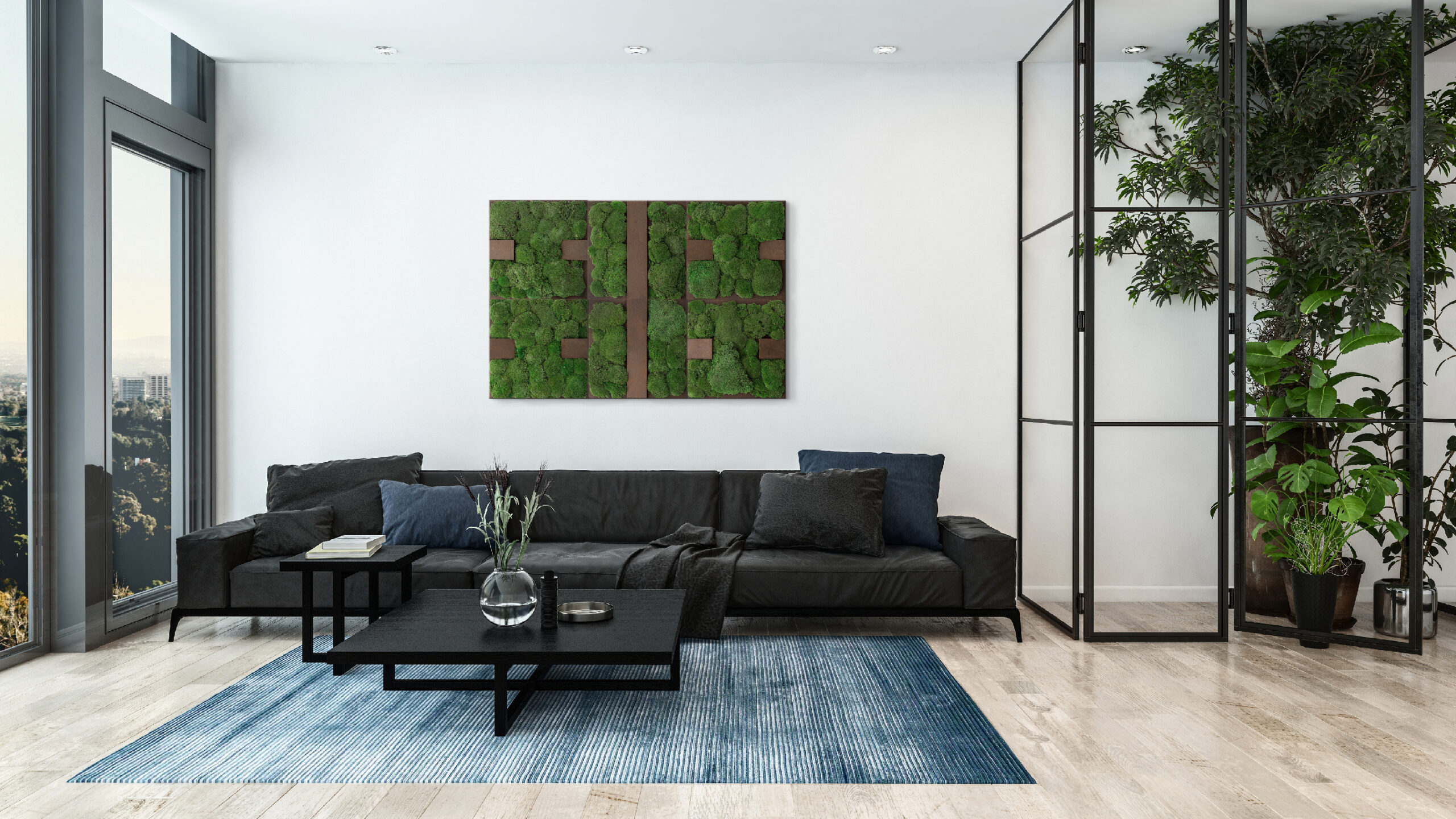

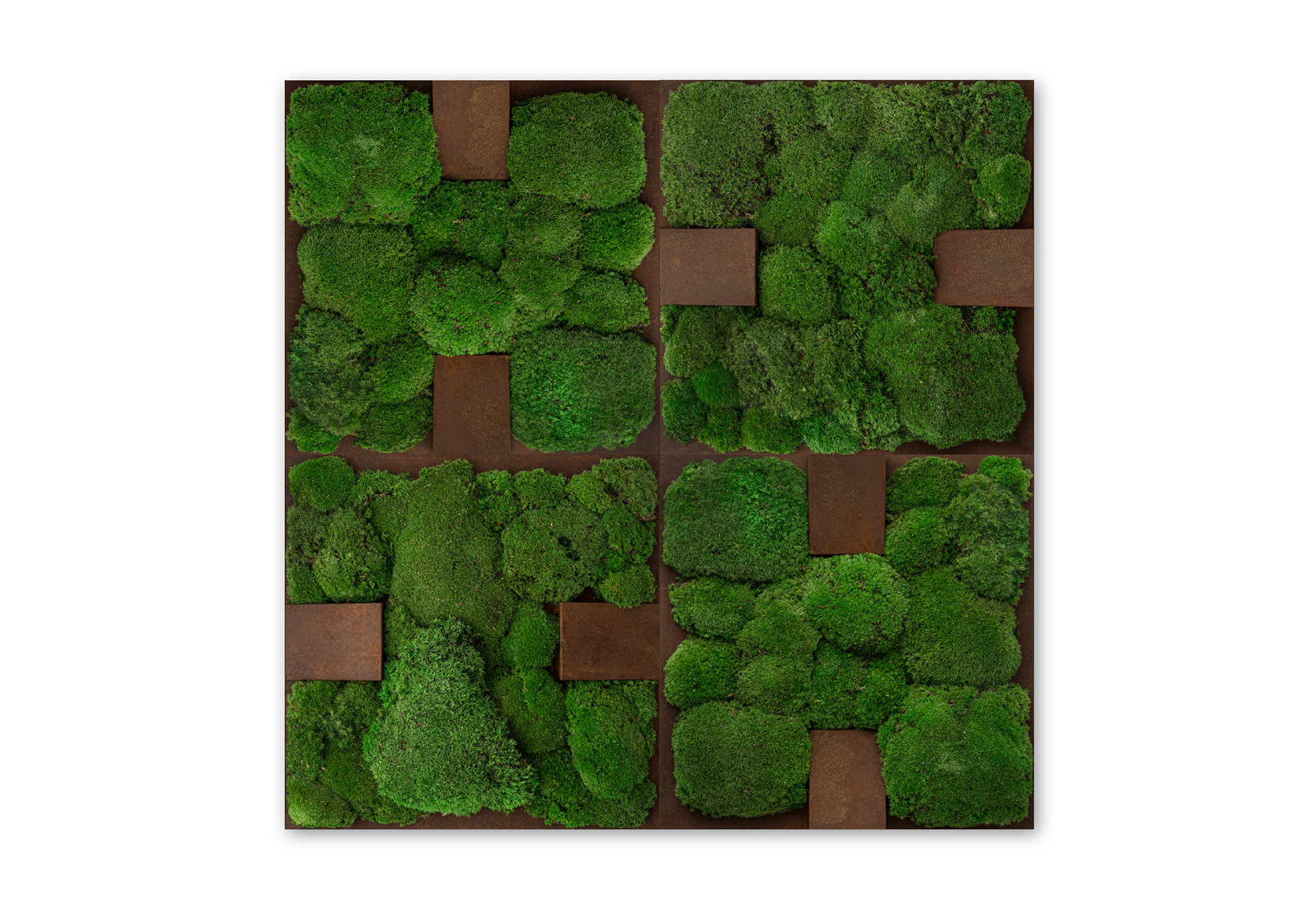
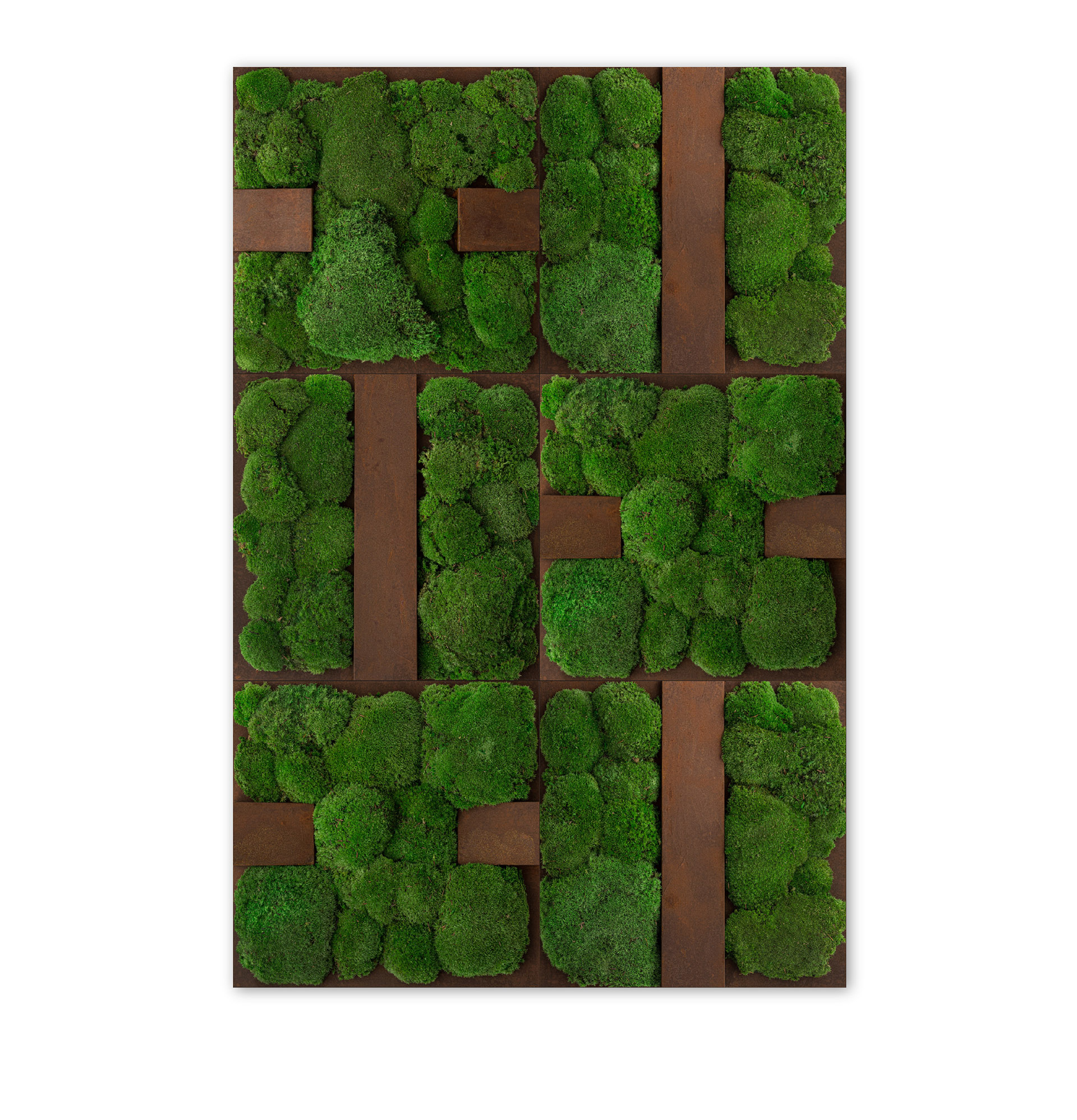
BLINK
Simplified, oblique solids with a smooth, rust-covered reflecting surface are embedded in the moss. The colors are inspired by the forest landscape. The intention was to get closer to nature, hence the limited use of artificial materials. This is an offer for those who value Scandinavian design, but want to diversify.
CELL
Organic by nature, this pattern has great possibilities to create various configurations. The ornamentality of form in extended compositions evokes associations with stained glass. The shape of cells is the result of geometric calculations and was inspired by Voronoi diagrams. Narrow stone lines of the pattern are juxtaposed with natural moss surfaces.


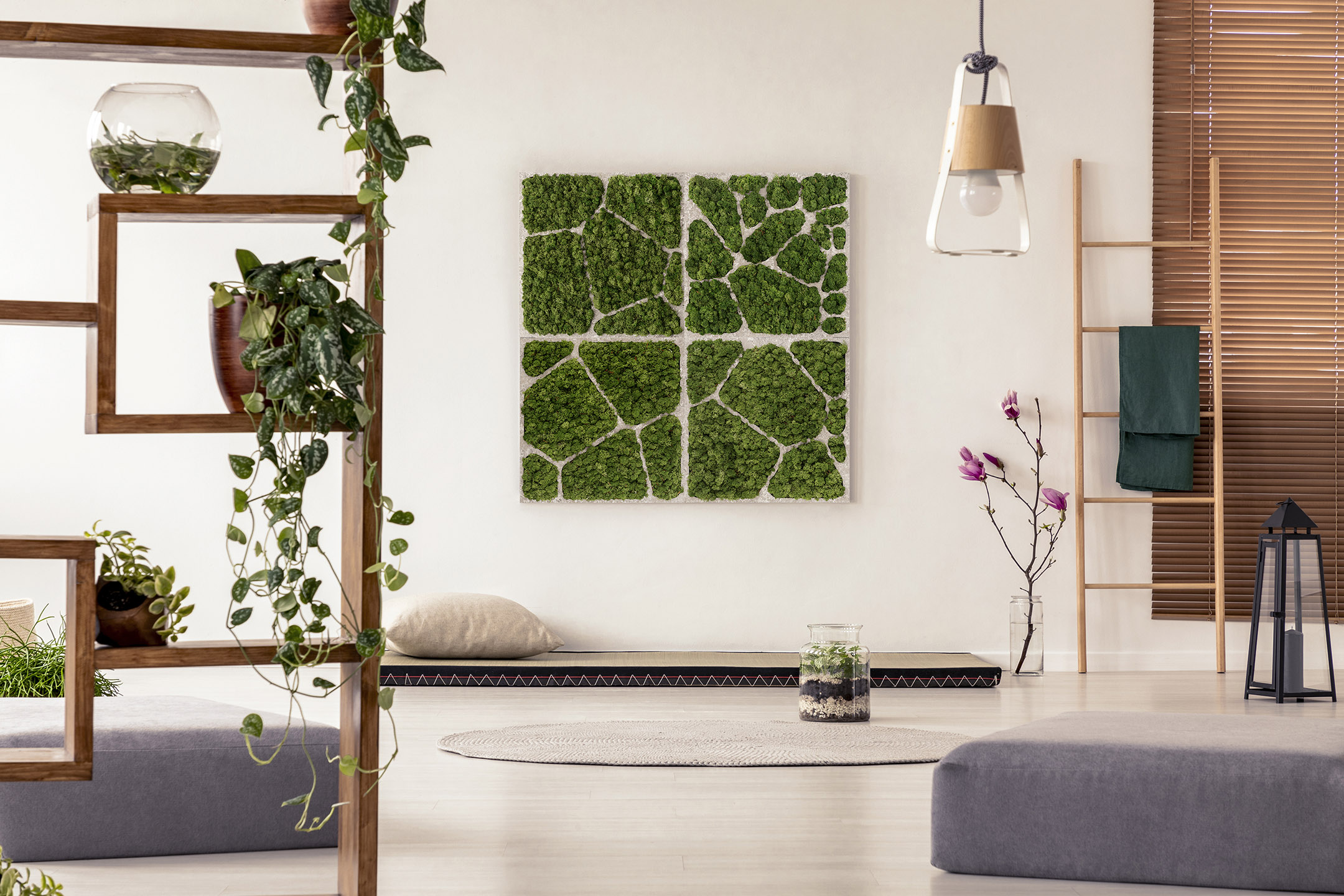
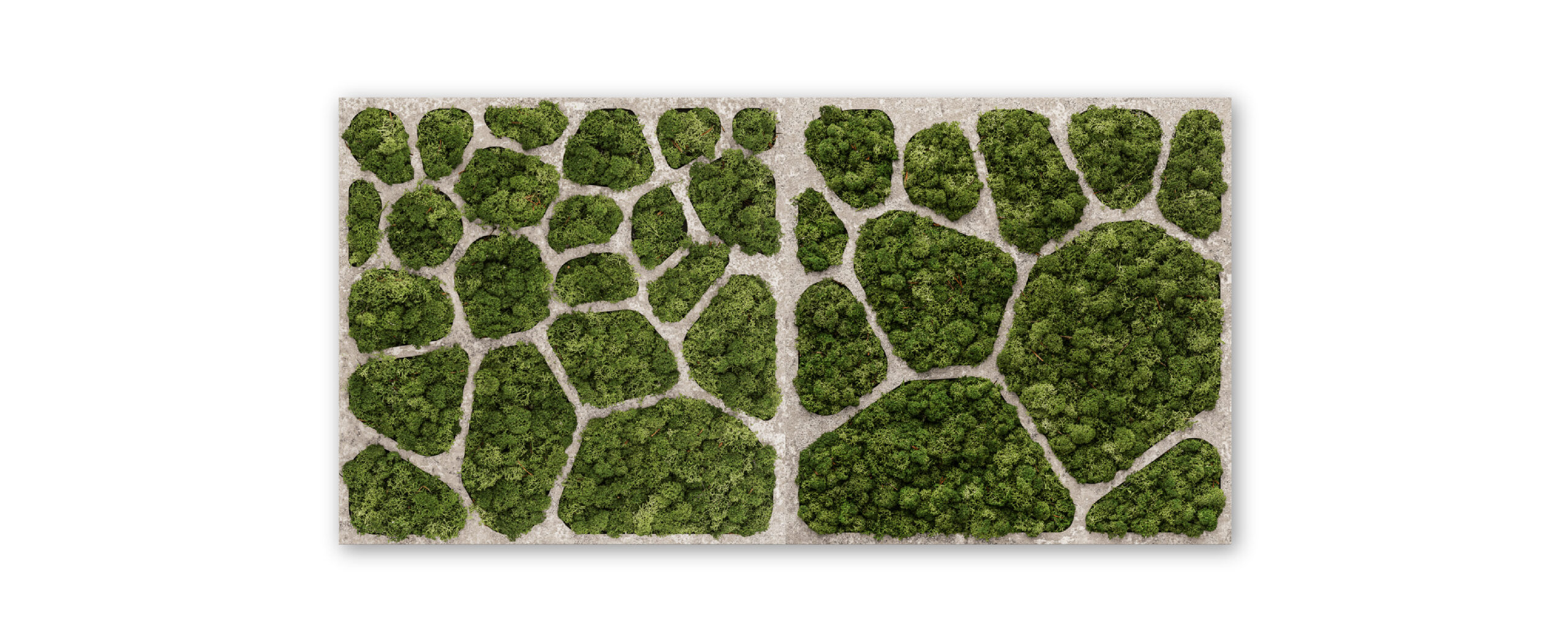
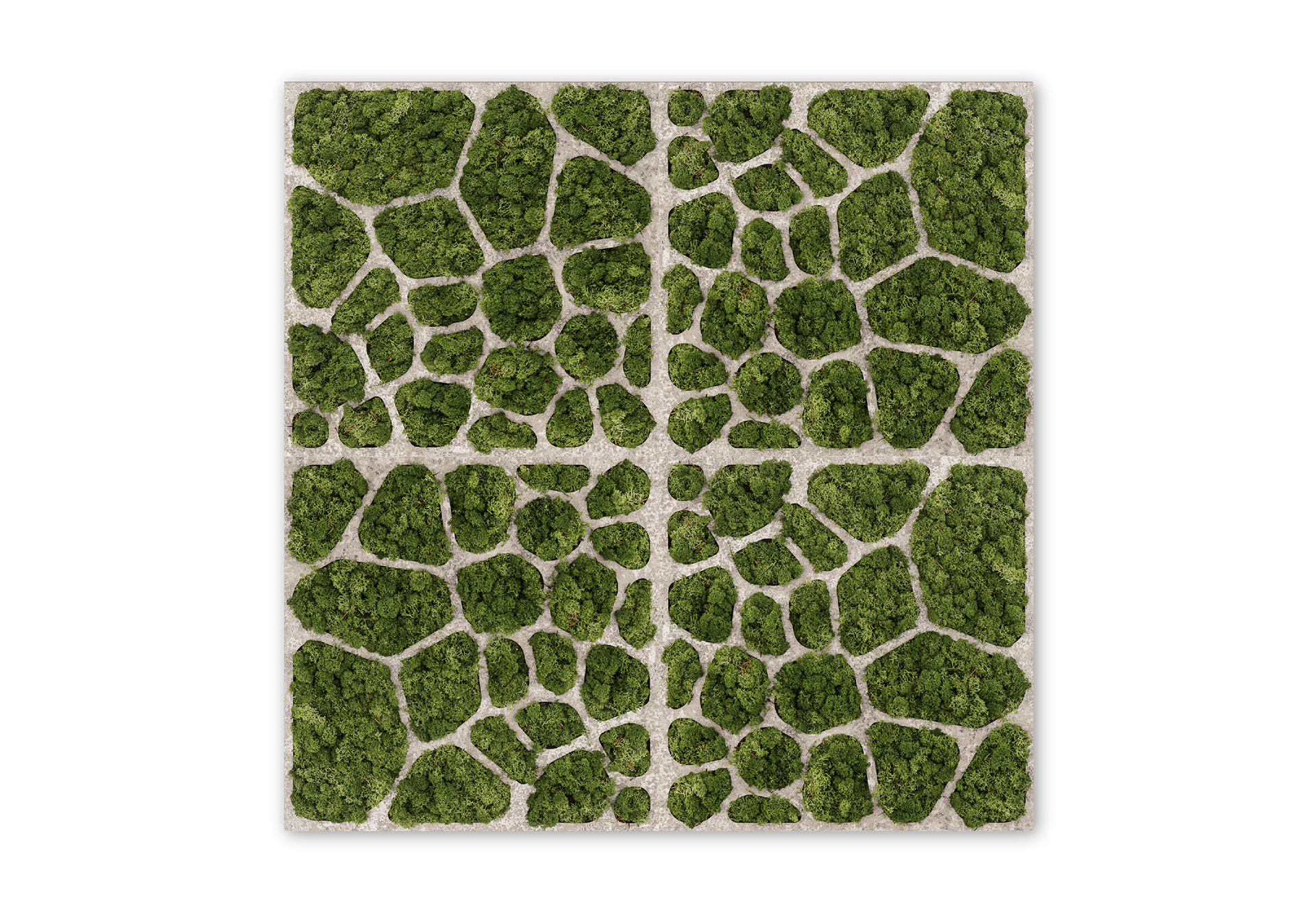
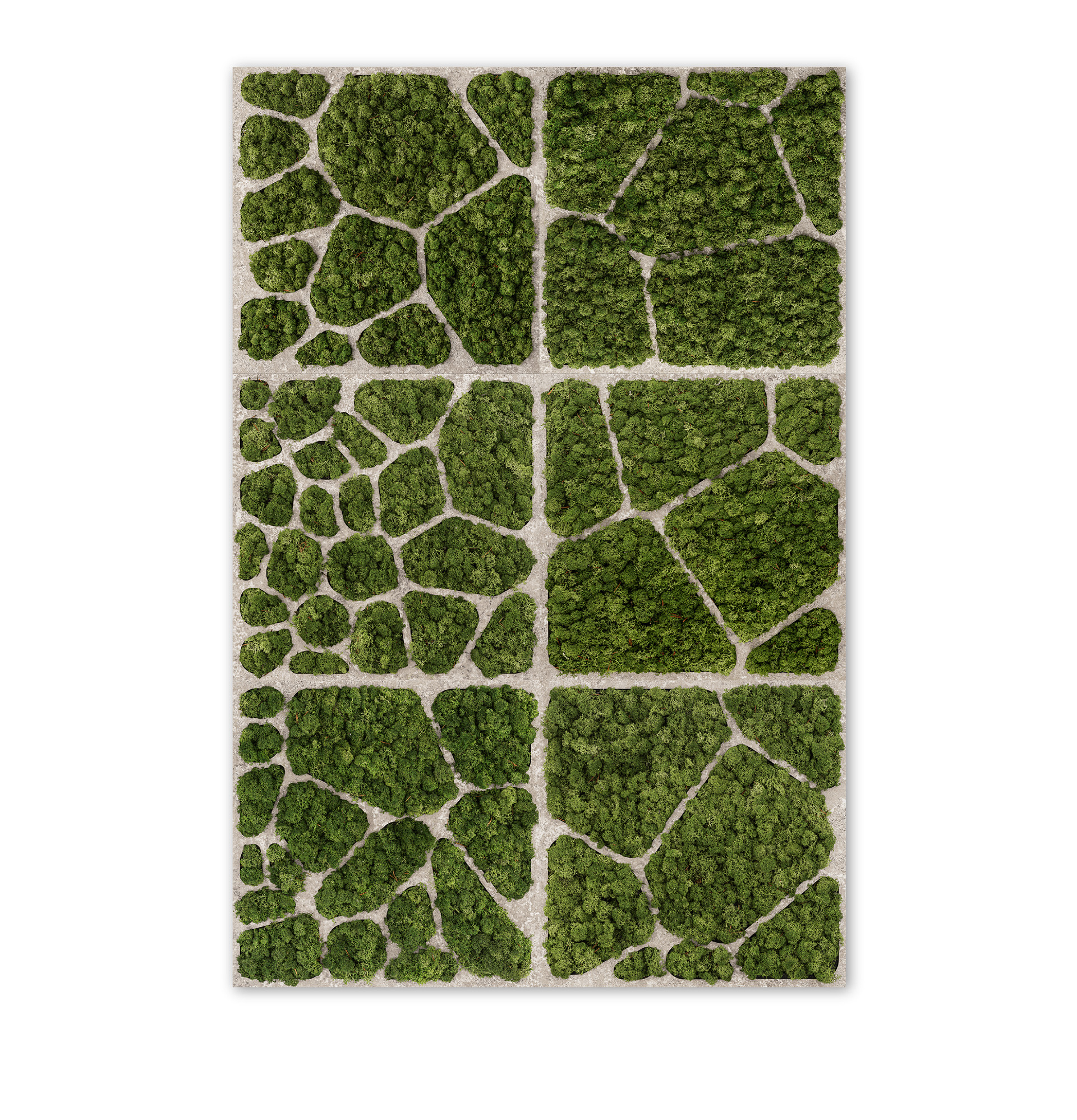
CELL
Organic by nature, this pattern has great possibilities to create various configurations. The ornamentality of form in extended compositions evokes associations with stained glass. The shape of cells is the result of geometric calculations and was inspired by Voronoi diagrams. Narrow stone lines of the pattern are juxtaposed with natural moss surfaces.
AGIO
A set of panels designed in opposition to other items from the collection. It refers to the original forms of architecture and fascination with industrial production. The designer’s idea was to create associations oscillating around peace, passing, stillness and silence. This pattern is a combination of rust imitation with the addition of golden divisions, evoking architectural associations and giving many design possibilities.
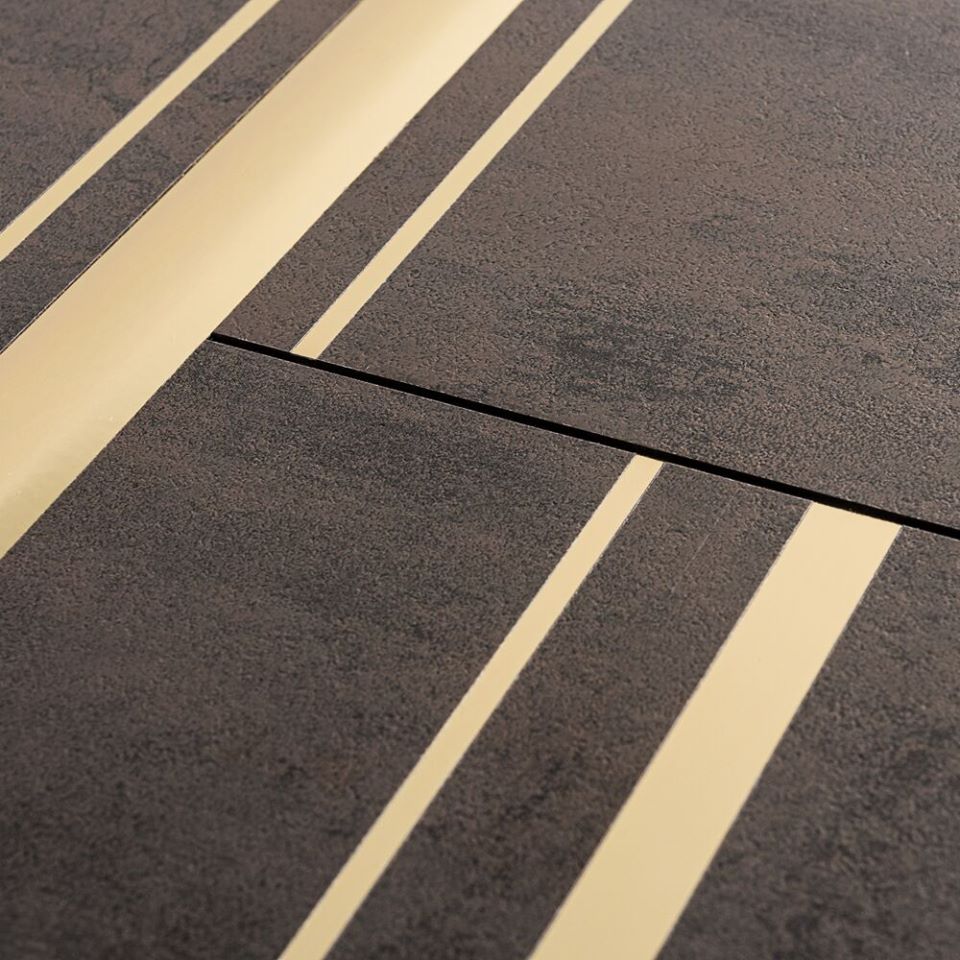

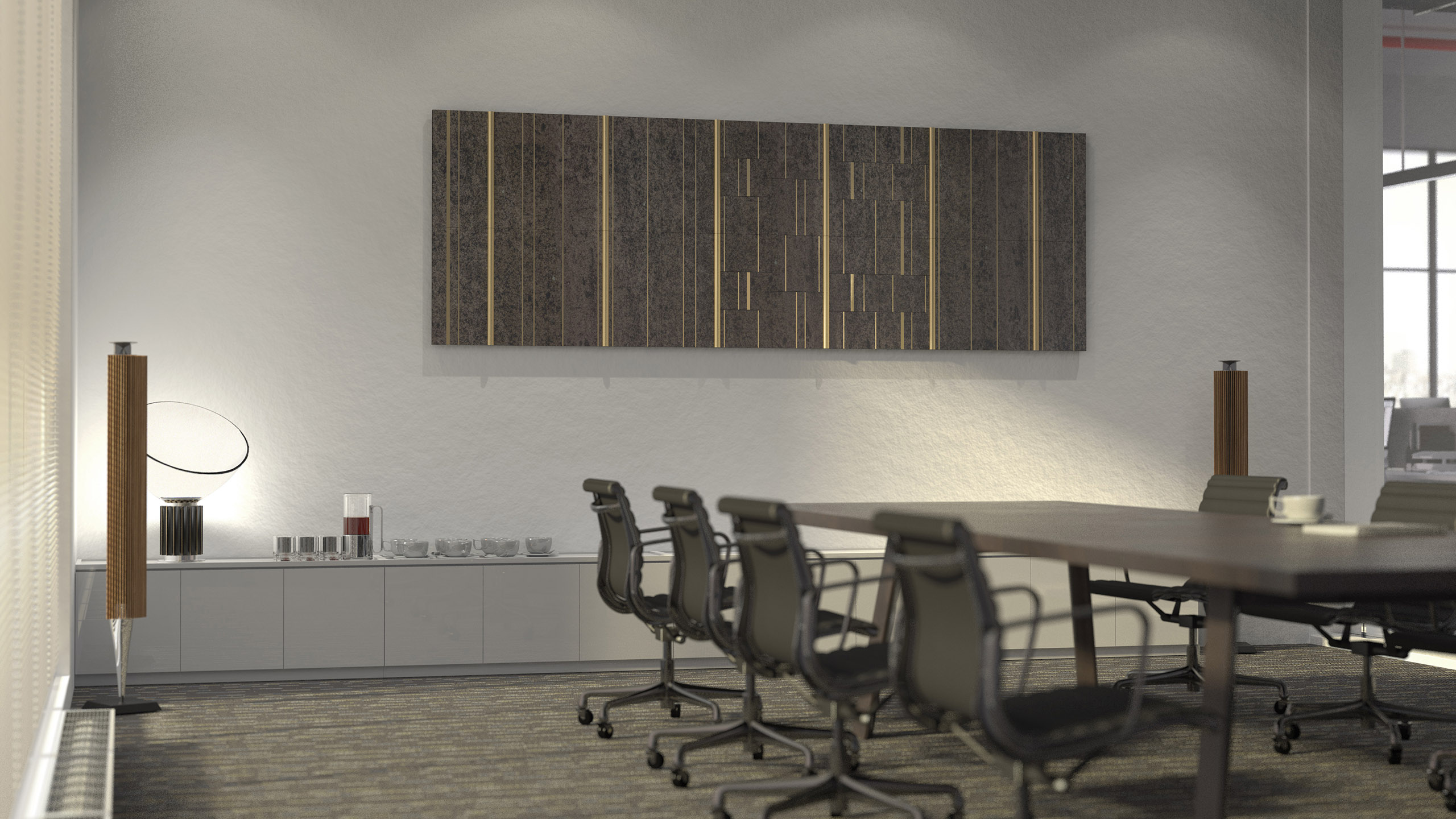
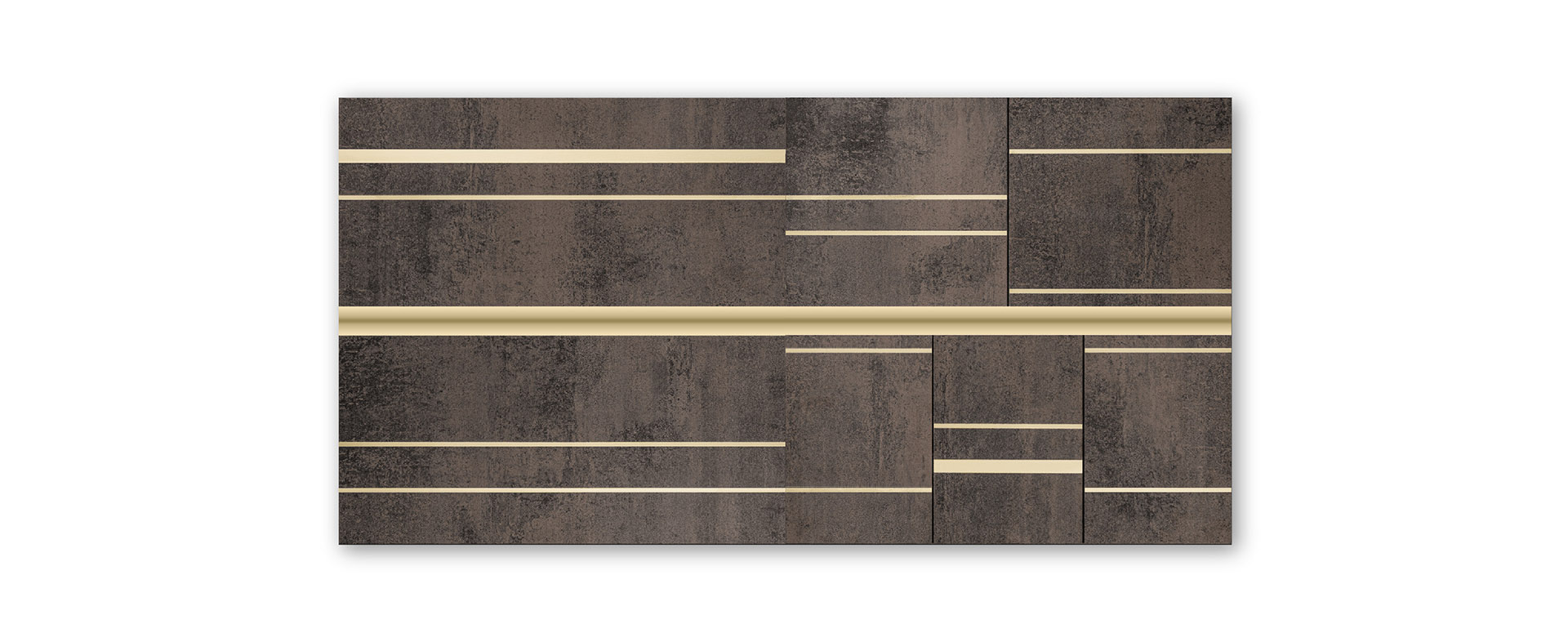
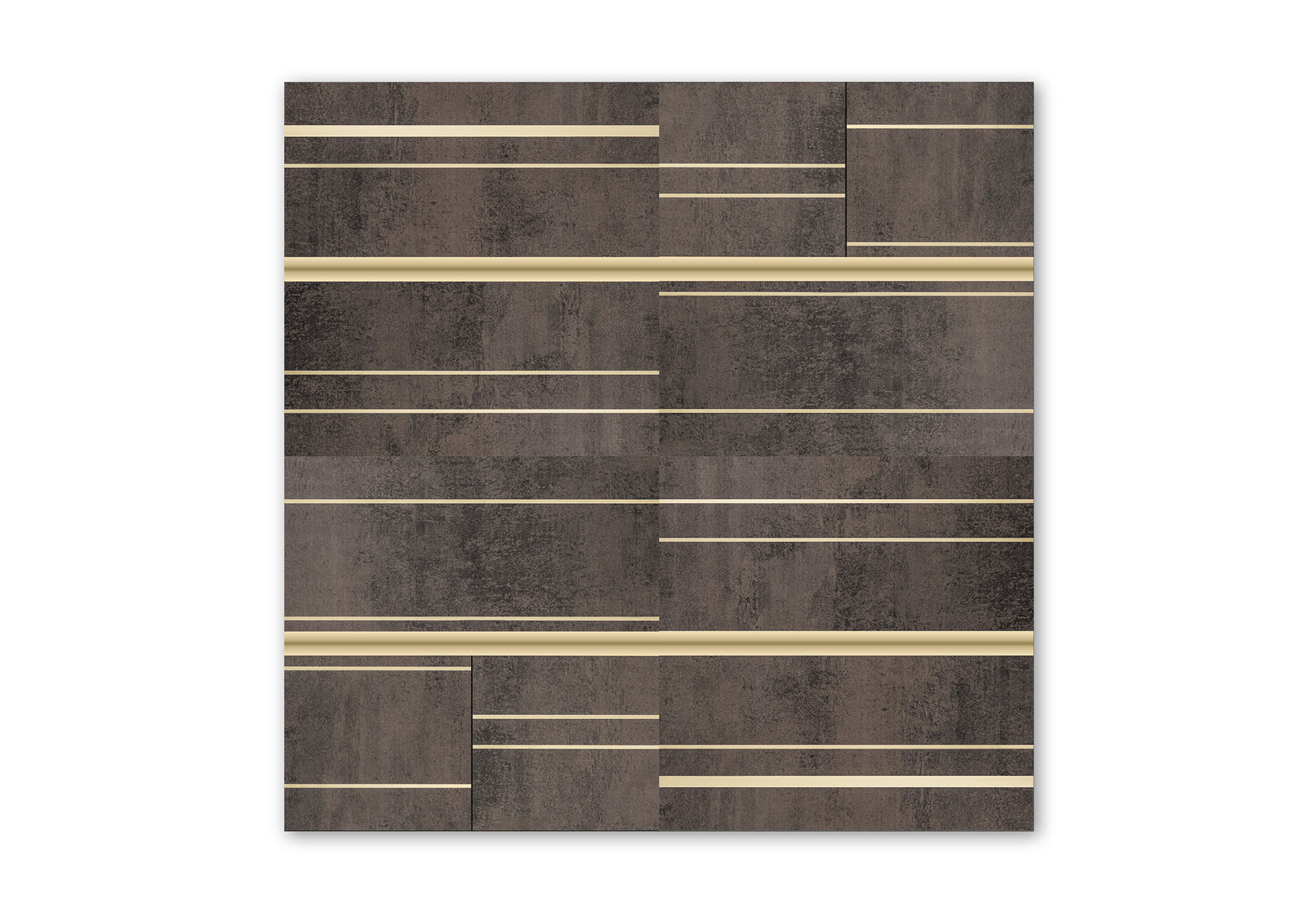

AGIO
A set of panels designed in opposition to other items from the collection. It refers to the original forms of architecture and fascination with industrial production. The designer’s idea was to create associations oscillating around peace, passing, stillness and silence. This pattern is a combination of rust imitation with the addition of golden divisions, evoking architectural associations and giving many design possibilities.
ONYX
Luxury, elegance, high quality and sentimentalism are the slogans describing the Onyx panel design. The name itself is derived from a mineral which is a variety of chalcedony with parallel layers of black and white. The panels feature classicist geometrization and synthetic approach to their form and a clear graphic message. They are made of laminates imitating various types of marble and copper.
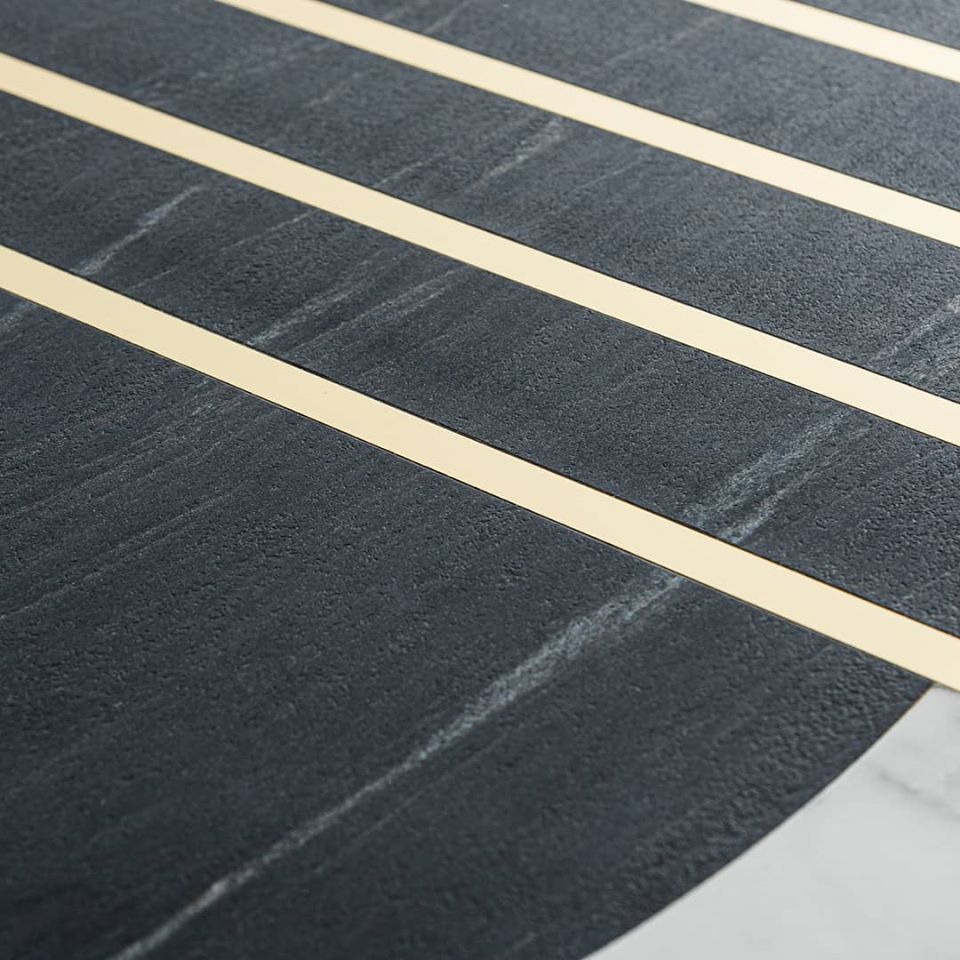

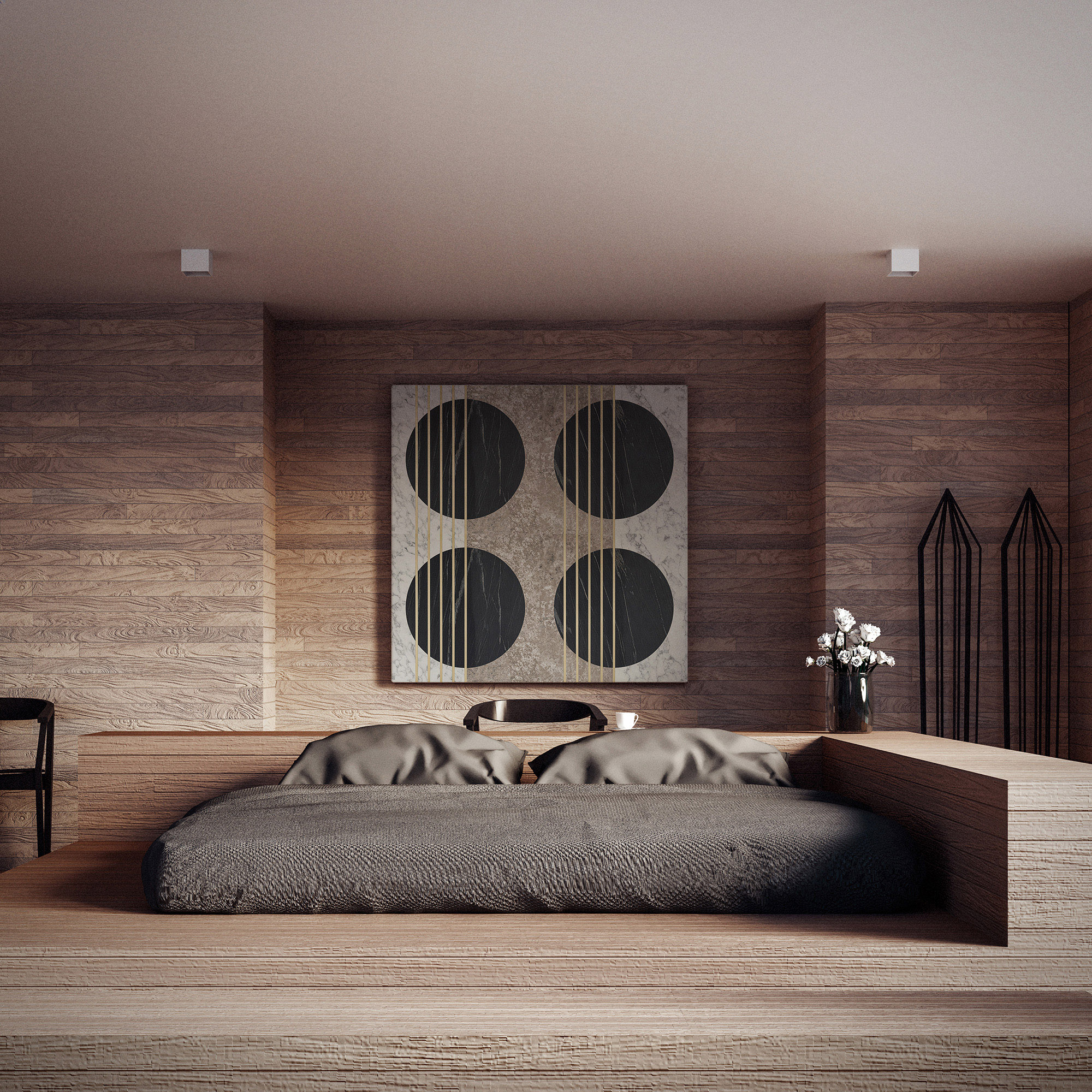
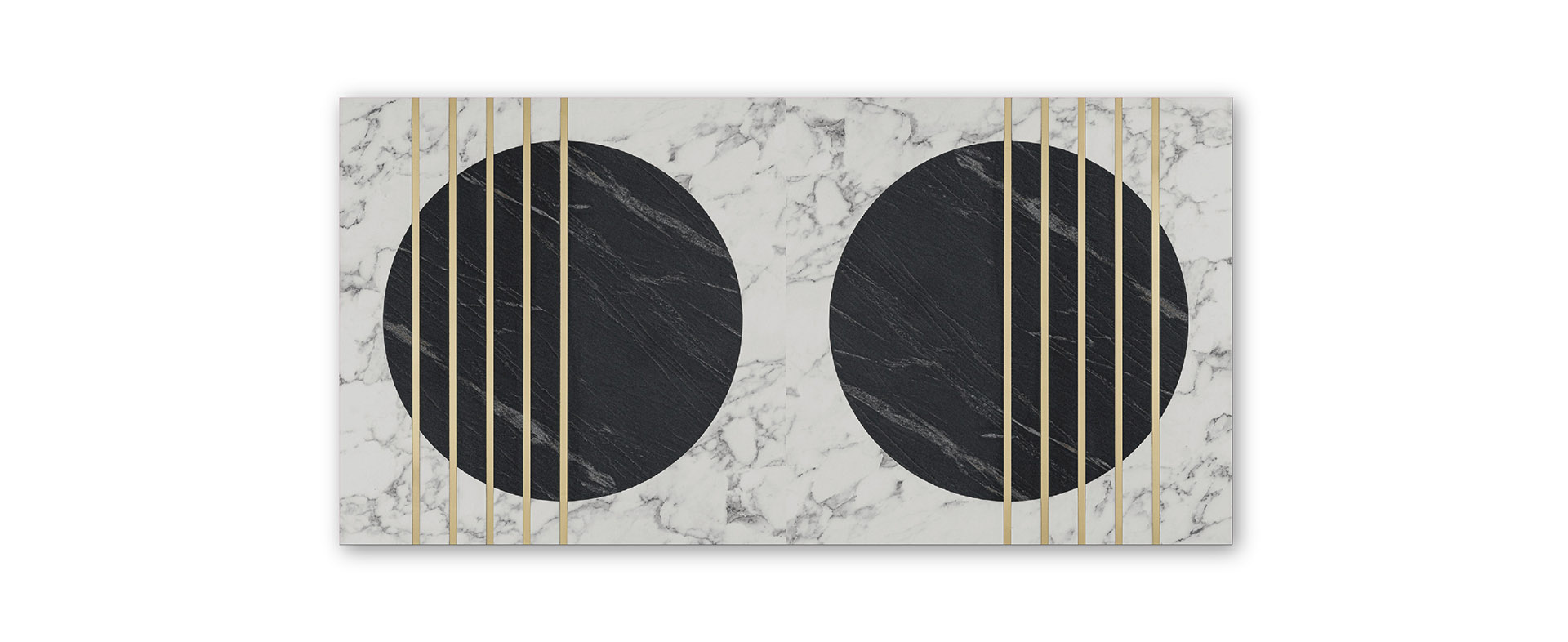

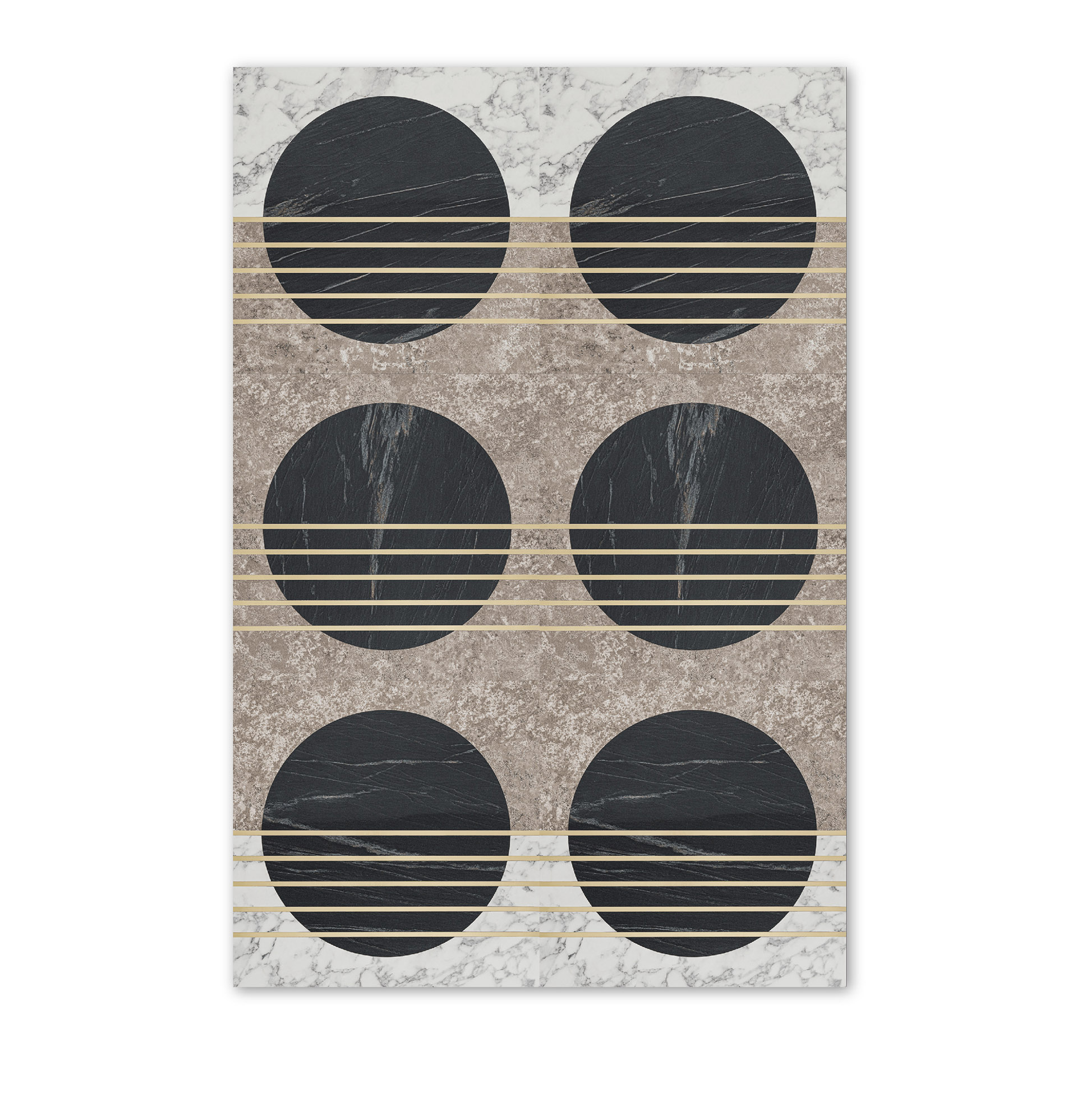
ONYX
Luxury, elegance, high quality and sentimentalism are the slogans describing the Onyx panel design. The name itself is derived from a mineral which is a variety of chalcedony with parallel layers of black and white. The panels feature classicist geometrization and synthetic approach to their form and a clear graphic message. They are made of laminates imitating various types of marble and copper.
KANO
The structured pattern made up of vertical lines and slants creates convex islands. The spaces between the islands are a kind of ravines, in which the shadows play an important role. The pattern is configurable in many ways. It is a great base for creating elaborate, complex compositions. In addition, this motif perfectly emboldens the wood, is very versatile, will look good in many interiors, both residential, restaurants and offices.
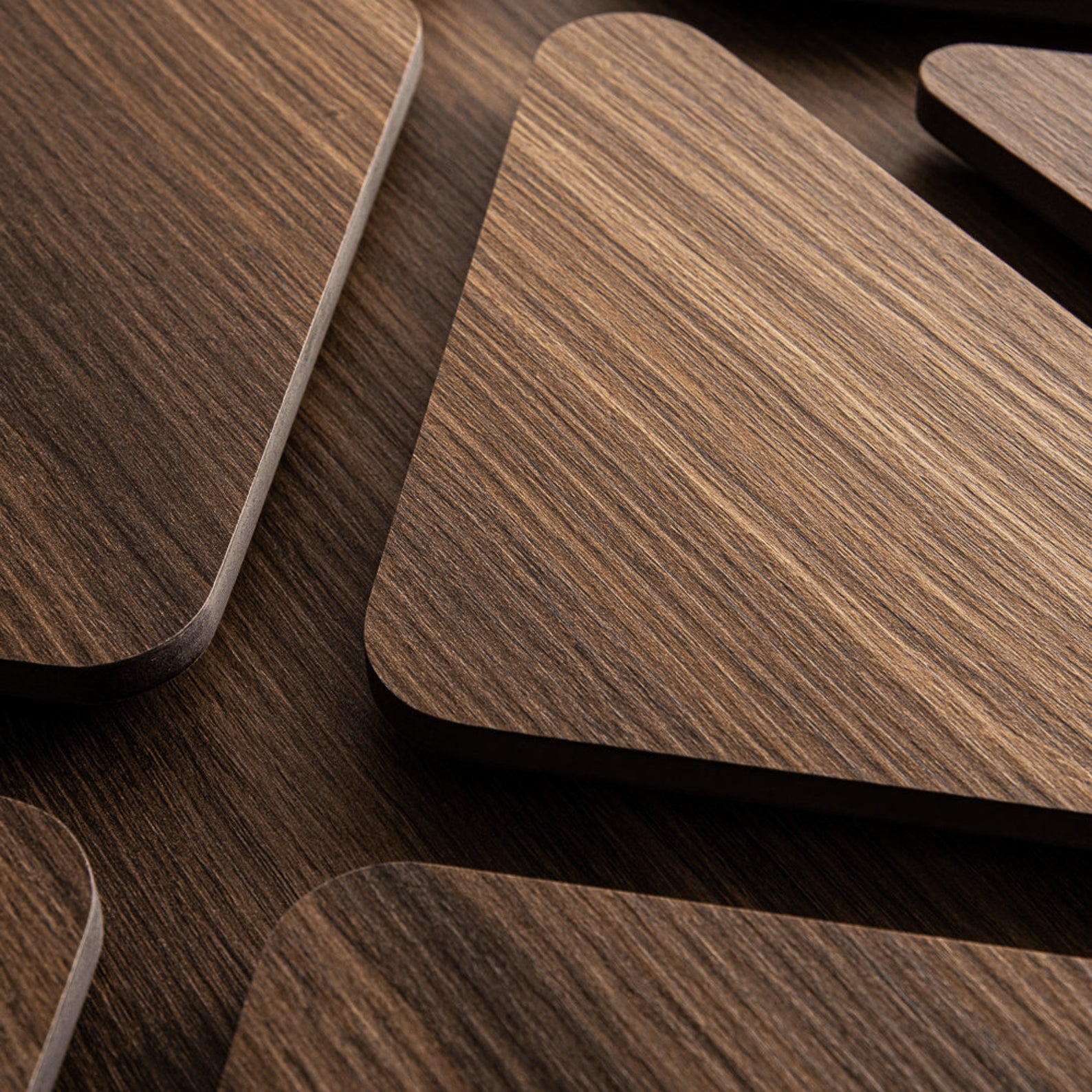

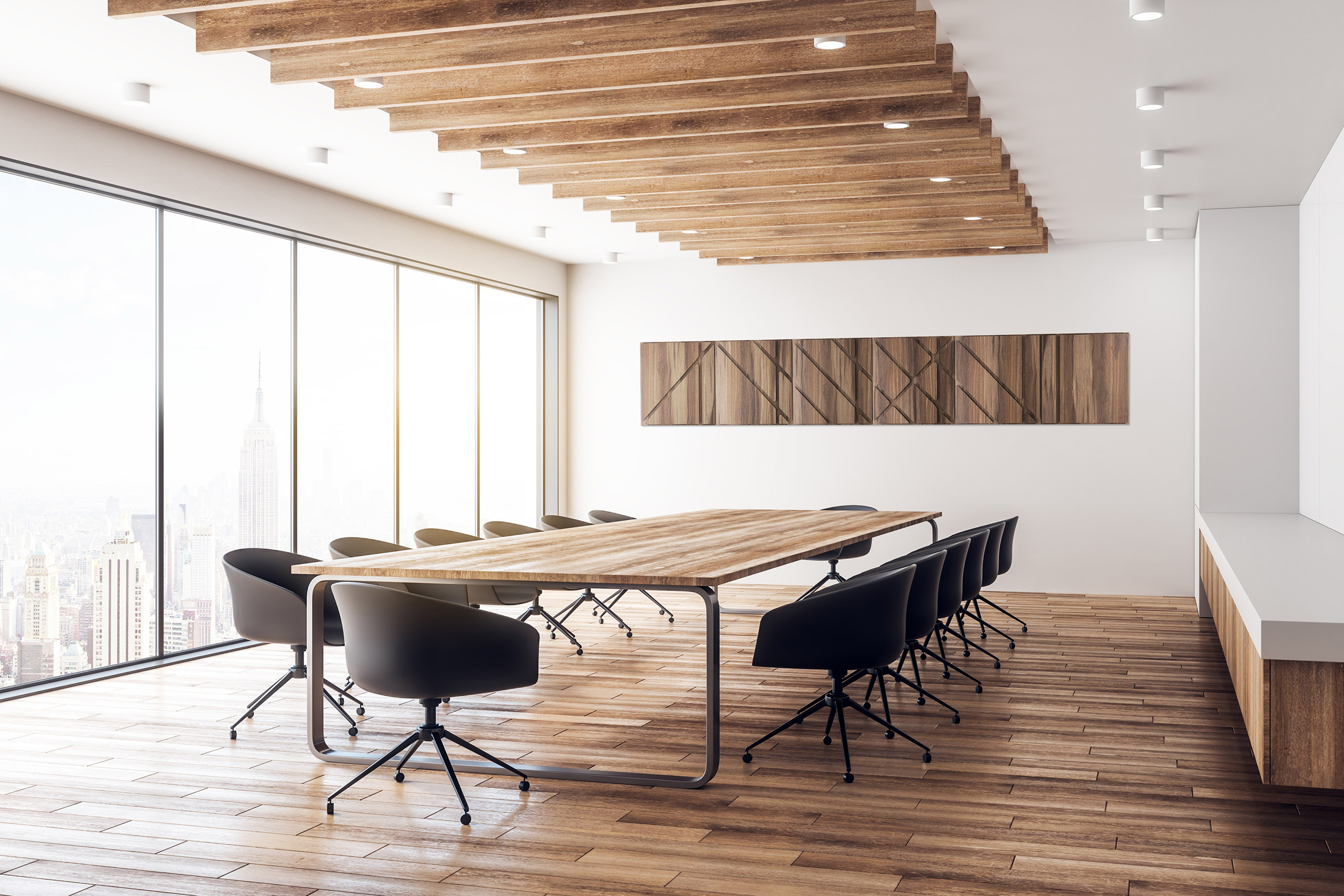
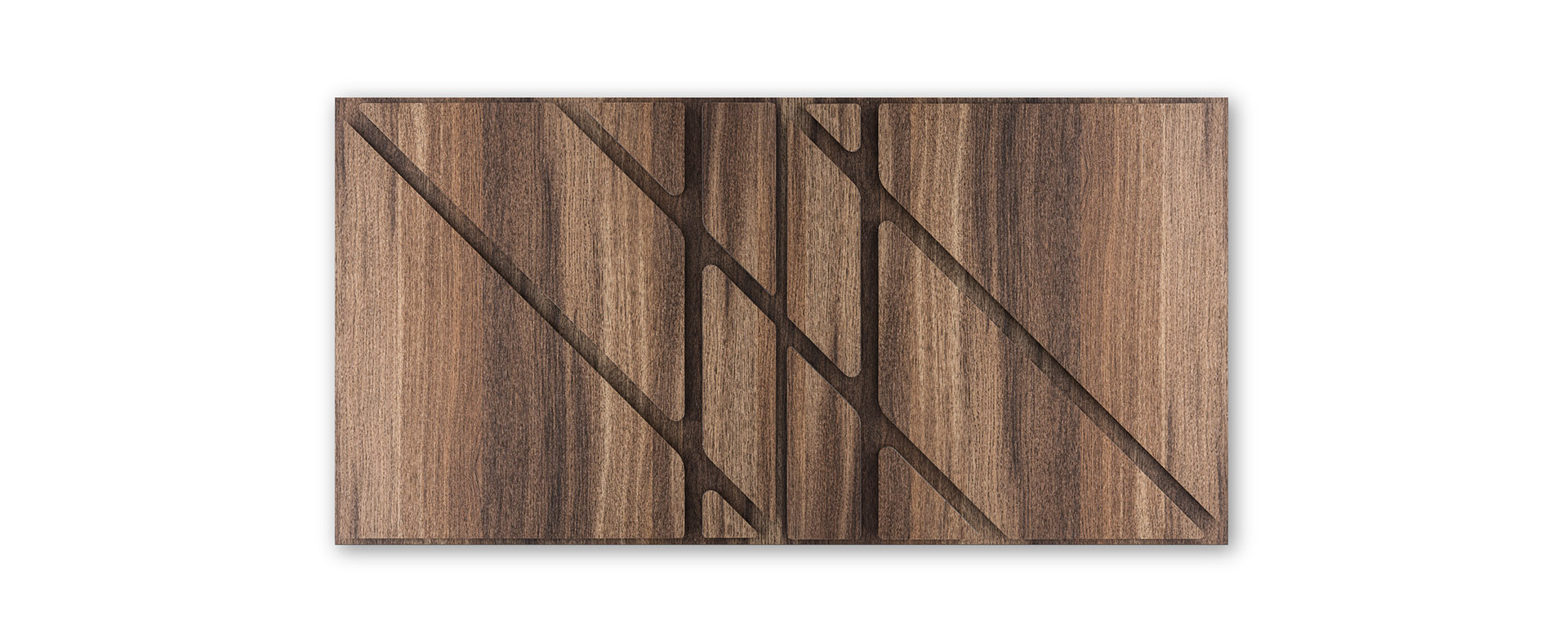
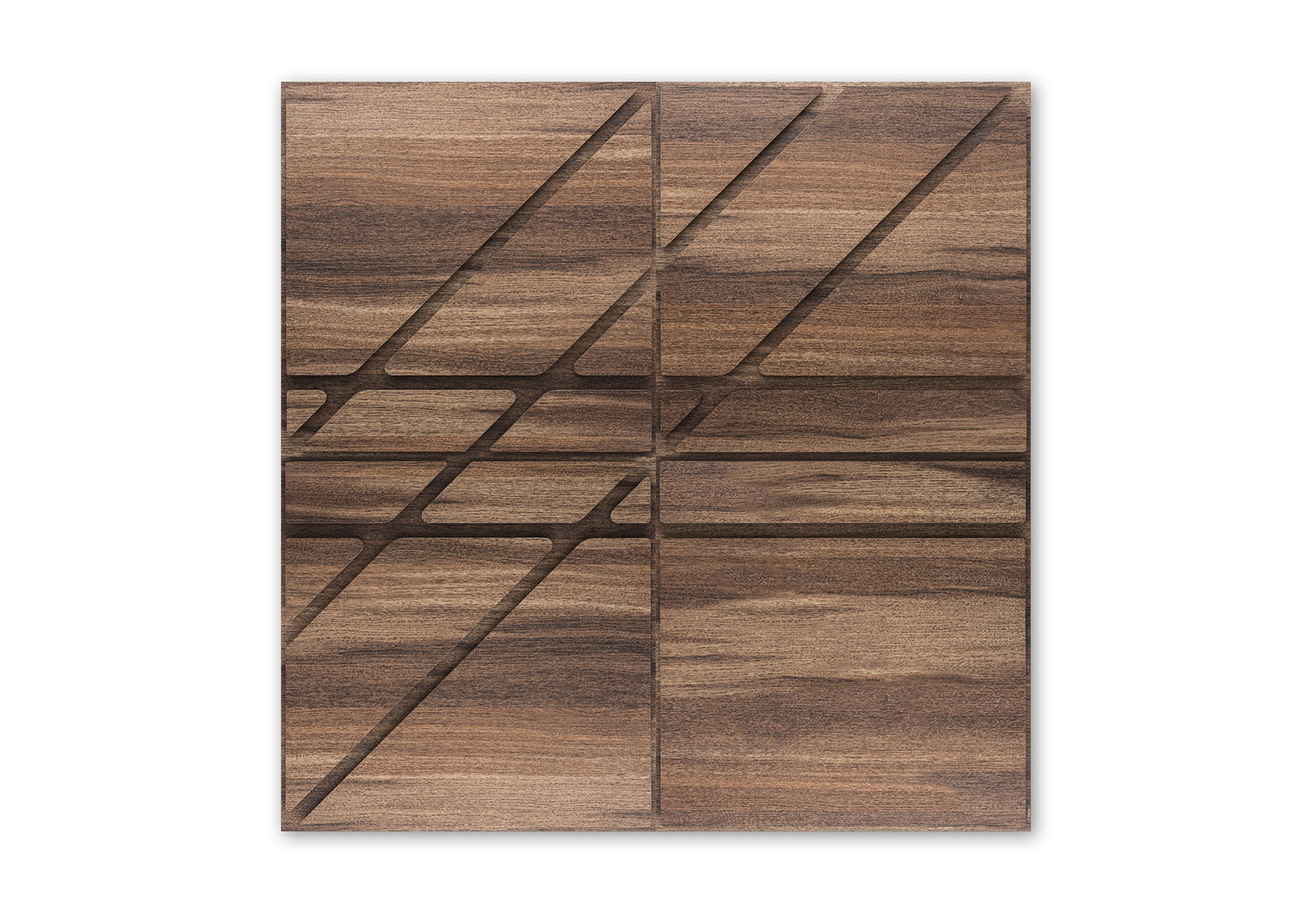
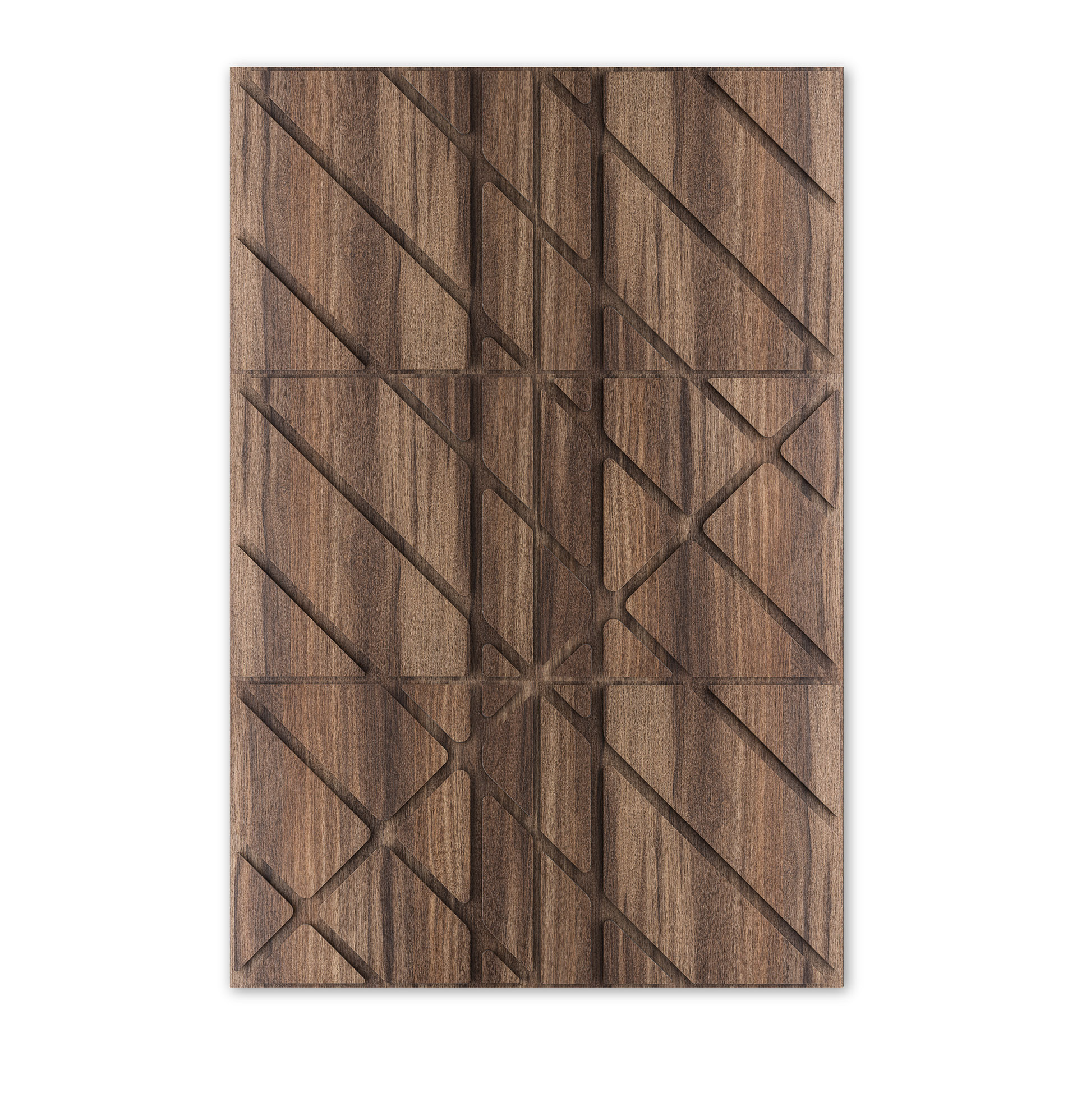
KANO
The structured pattern made up of vertical lines and slants creates convex islands. The spaces between the islands are a kind of ravines, in which the shadows play an important role. The pattern is configurable in many ways. It is a great base for creating elaborate, complex compositions. In addition, this motif perfectly emboldens the wood, is very versatile, will look good in many interiors, both residential, restaurants and offices.
RAAS
The nature of the formula is both organic and geometric. It creates an extensive network. It makes it possible to combine infinitely large compositions. Three materials were used in the project: flat moss (emphasizing the organic character), concrete and stone (laminates). A single plate has been created from multiple square patterned fields that are not rotationally symmetrical. Randomly distributed throughout the entire tile area, they form a variety of patterns. The fields used in this formula are composed of two quarters circles. The Truchet tiles were first described in Sébastien Truchet’s 1704 Mémoire sur les combinaisons diary and were popularized in 1987 by Cyril Stanley Smith.
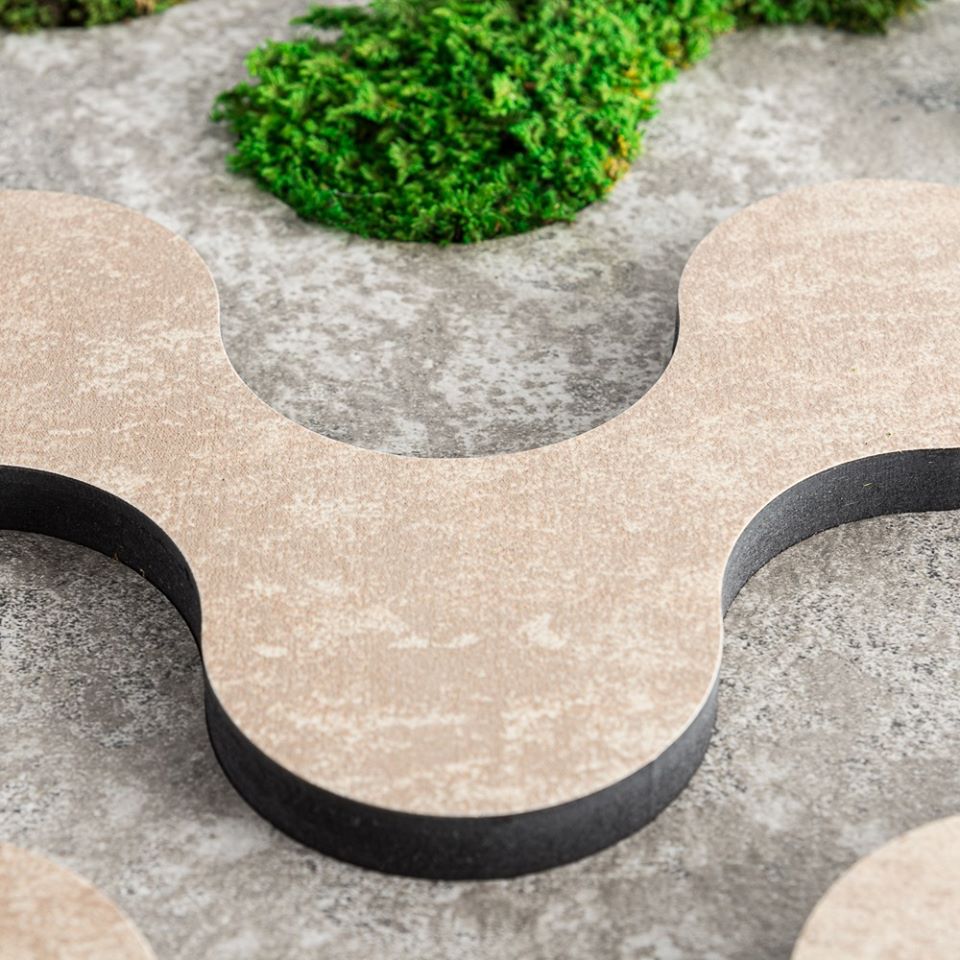

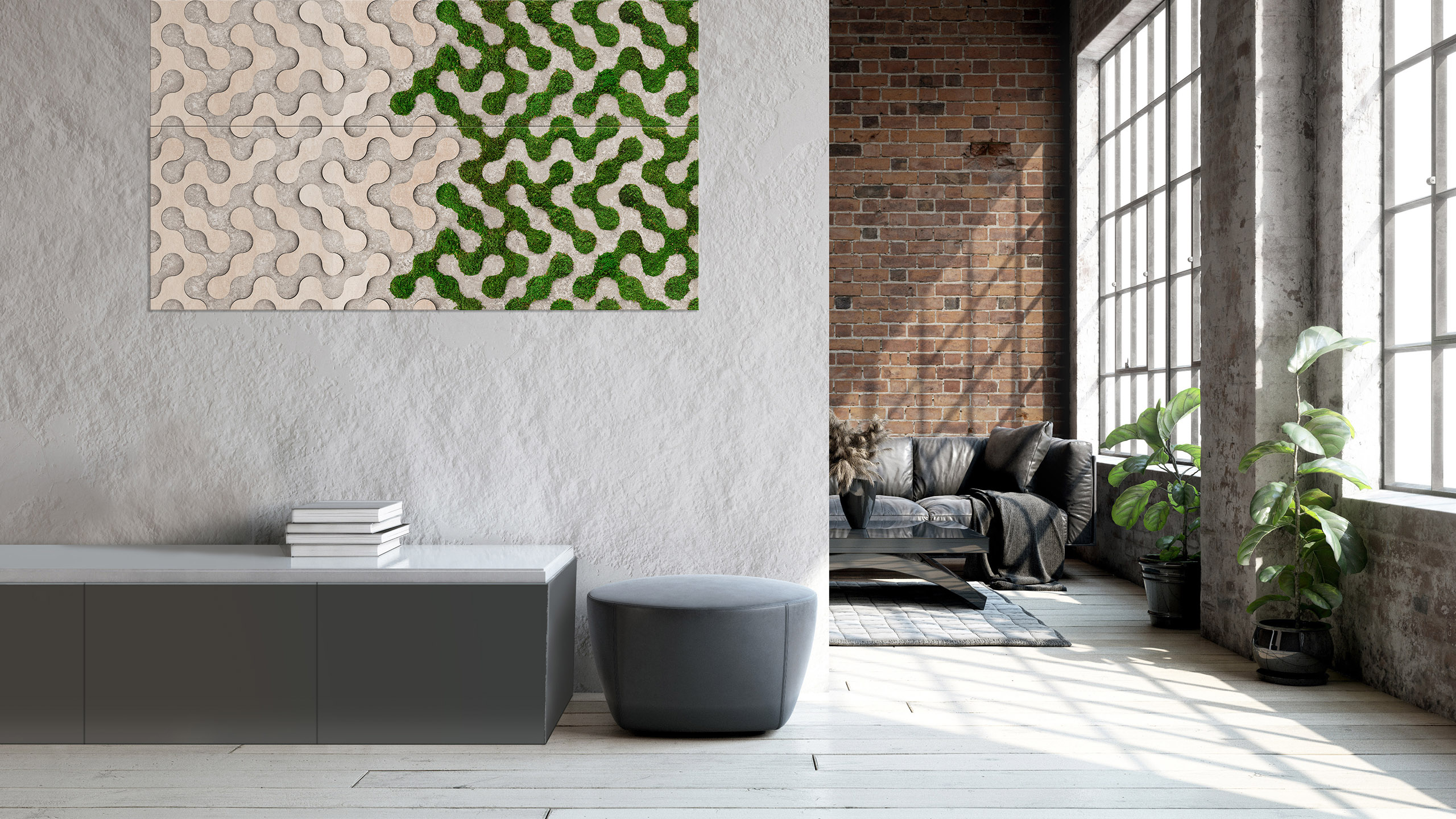
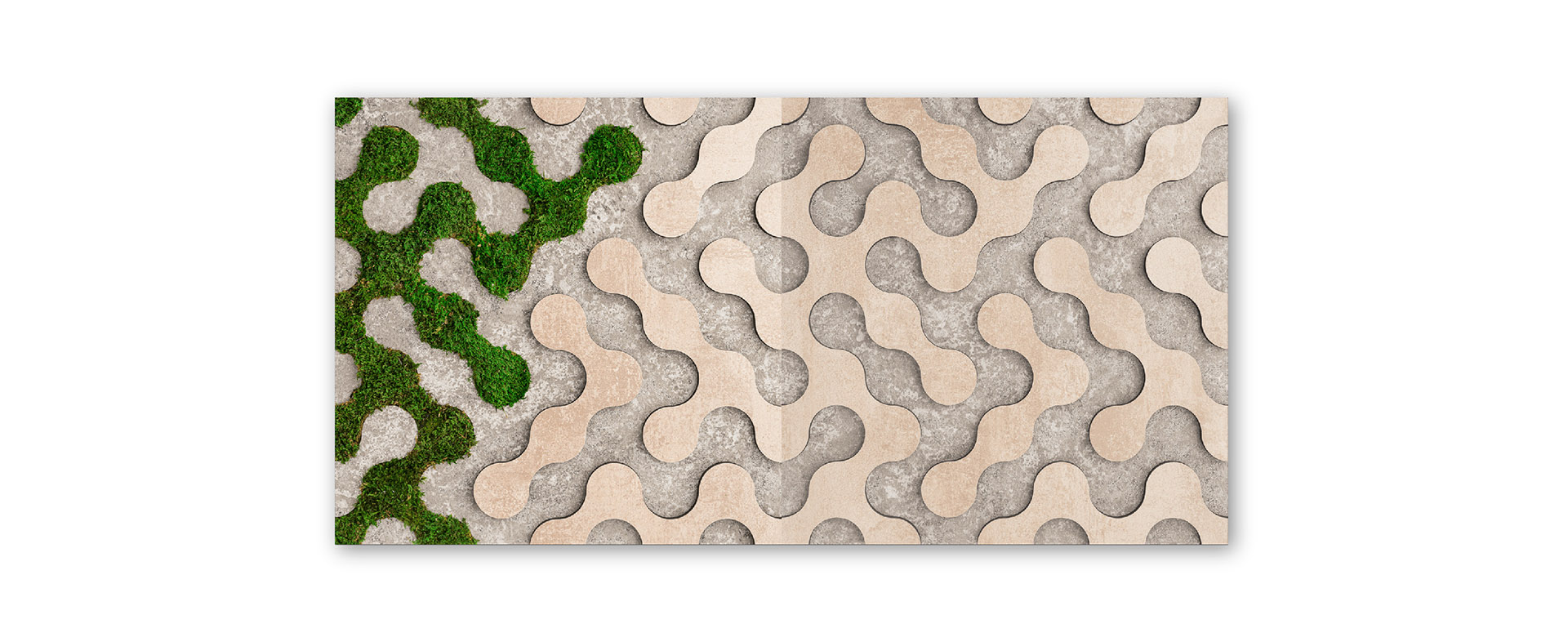
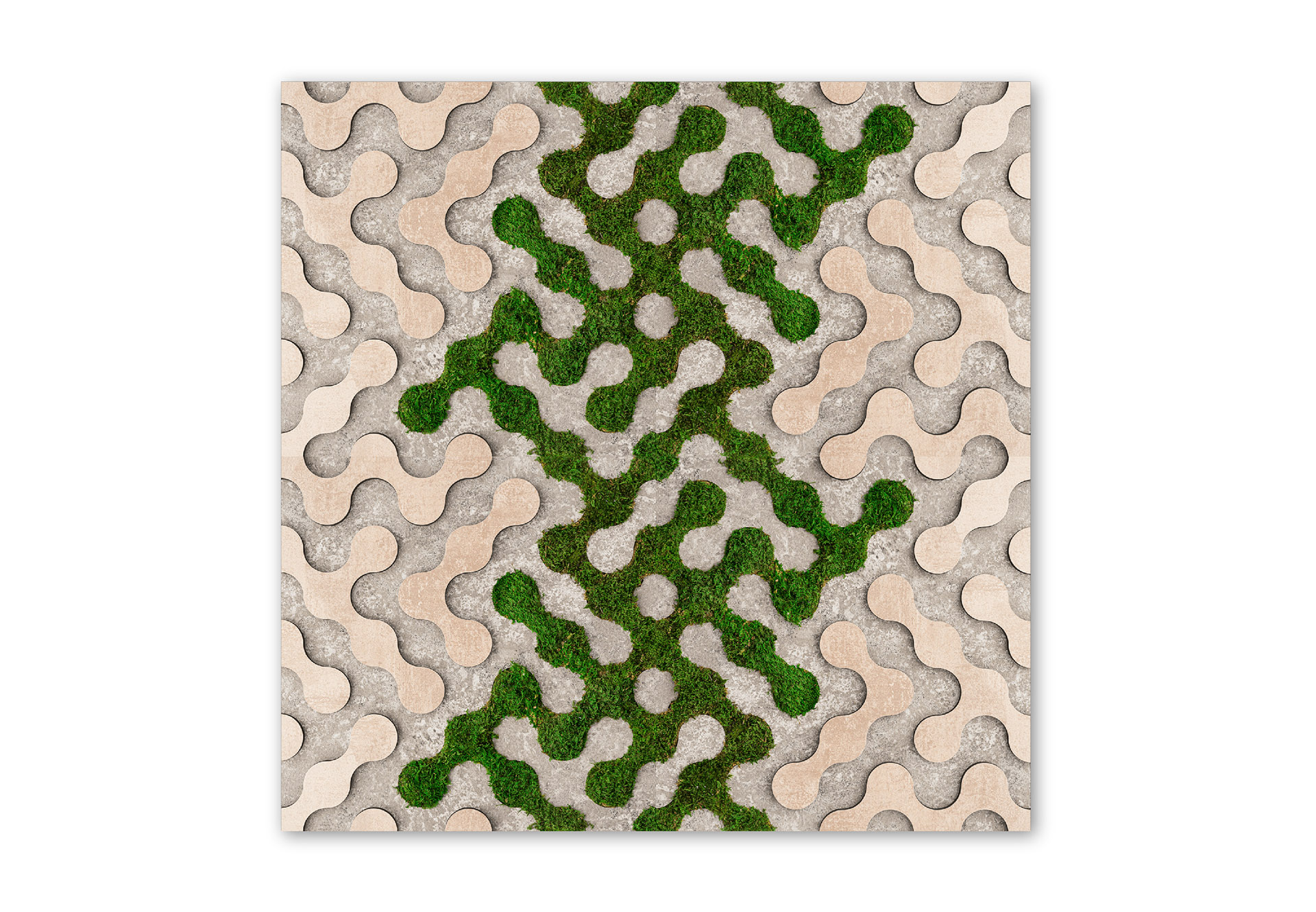
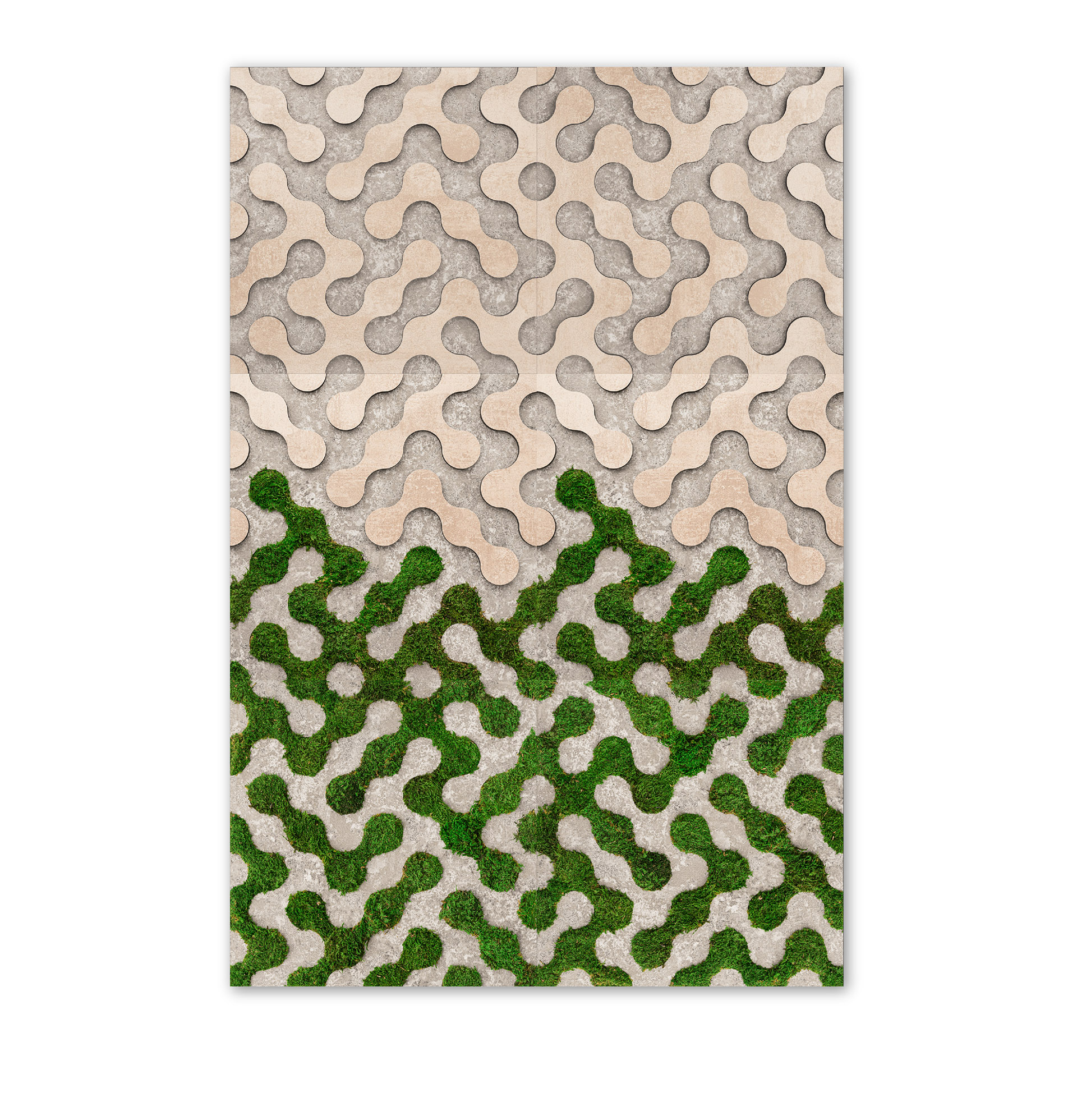
RAAS
The nature of the formula is both organic and geometric. It creates an extensive network. It makes it possible to combine infinitely large compositions. Three materials were used in the project: flat moss (emphasizing the organic character), concrete and stone (laminates). A single plate has been created from multiple square patterned fields that are not rotationally symmetrical. Randomly distributed throughout the entire tile area, they form a variety of patterns. The fields used in this formula are composed of two quarters circles. The Truchet tiles were first described in Sébastien Truchet’s 1704 Mémoire sur les combinaisons diary and were popularized in 1987 by Cyril Stanley Smith.
